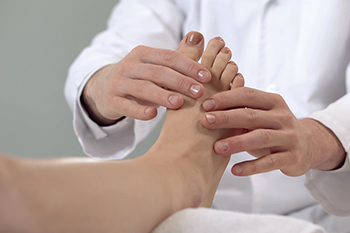
It may seem improbable, but riding a bicycle can cause immense foot pain. The main reason for this pain is that all the force expended during a ride goes through the soles of the feet. For that reason, especially if you ride often and for a long duration, heel and arch pain can develop. Cycling footwear and cleat position are often involved, along with other causes, such as plantar fasciitis. If plantar fasciitis, an inflammation of the band of tissue that runs along the sole of the foot, is ignored, it also may result in calcium deposits. Biomechanical issues, such as ankle pronation, flat feet, or high arches can lead to Achilles tendonitis. Certain exercises before and after each ride can help to reduce arch soreness, and orthotics can go a long way toward prevention of biomechanical issues. In addition, wearing cycling shoes that fit properly can lower the risk of foot pain. For more information about custom orthotics and foot pain from cycling, please consult a podiatrist.
Sports related foot and ankle injuries require proper treatment before players can go back to their regular routines. For more information, contact one of our podiatrists of Advanced Foot & Ankle Medical Center . Our doctors can provide the care you need to keep you pain-free and on your feet.
Sports Related Foot and Ankle Injuries
Foot and ankle injuries are a common occurrence when it comes to athletes of any sport. While many athletes dismiss the initial aches and pains, the truth is that ignoring potential foot and ankle injuries can lead to serious problems. As athletes continue to place pressure and strain the area further, a mild injury can turn into something as serious as a rupture and may lead to a permanent disability. There are many factors that contribute to sports related foot and ankle injuries, which include failure to warm up properly, not providing support or wearing bad footwear. Common injuries and conditions athletes face, including:
- Plantar Fasciitis
- Plantar Fasciosis
- Achilles Tendinitis
- Achilles Tendon Rupture
- Ankle Sprains
Sports related injuries are commonly treated using the RICE method. This includes rest, applying ice to the injured area, compression and elevating the ankle. More serious sprains and injuries may require surgery, which could include arthroscopic and reconstructive surgery. Rehabilitation and therapy may also be required in order to get any recovering athlete to become fully functional again. Any unusual aches and pains an athlete sustains must be evaluated by a licensed, reputable medical professional.
If you have any questions please feel free to contact our office located in Thousand Oaks, CA . We offer the newest diagnostic and treatment technologies for all your foot and ankle needs.









